Nnormal Tomir
Test Location: Marin, CA
Test Duration: 180 miles (so far)
Stated Stack Height (Men’s): 31 mm (heel) / 23 mm (forefoot)
Stated Heel-to-Toe Drop: 8 mm
Stated Features:
- An upper made from a blend of monofilament polyester and TPE
- An outsole constructed from Vibram Megagrip Litebase featuring 5 mm lugs
- An asymmetrical lacing system for midfoot support and to reduce common pressure points
- Sewn in factory insoles
- Upper is cross-stitched directly to midsole for increased durability
Stated Weight per Shoe (US Men’s Size 9): 260 g / 9.2 oz
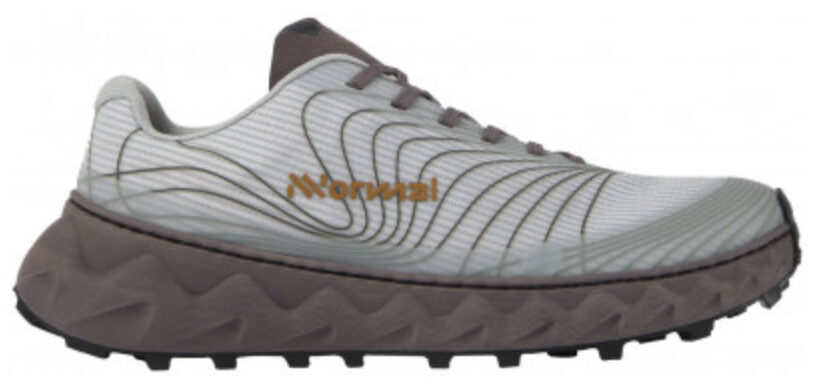
Blister Measured Weight per Shoe (US Men’s Size 8.5):
- Shoes + Laces: N/A g (left) & N/A g (right)
- Insoles: N/A g (left) & N/A g (right)
- Total: 263 g (left) & 267 g (right)
MSRP: $165
Size Tested: US Men’s 8.5 / EU 42
Reviewer: 5’9”, 150 lbs / 175 cm, 68 kg
Intro
Launched in the fall of 2022, Nnormal debuted as the long awaited (and hotly anticipated) footwear venture from one of the leaders of trail running’s avant-garde, Kilian Jornet. After leaving his longtime sponsor in Salomon last year, an abrupt move that stirred speculation about his potential retirement from competition, Kilian announced he planned to collaborate with Spanish footwear giant, Camper, to produce a line of athletic apparel and trail running shoes. Dubbed “Nnormal,” as in, “the new normal,” the thesis of this project is part performance and part an attempt to lessen the environmental toll exacted by the footwear industry. The two principal models NNormal has released to date — their narrower-fitting racer, the Kjerag, and their maximal, wider-fitting generalist, the Tomir — marry Kilian’s personal design approach to shoes, amassed over decades of racing at the highest level, with his vocal sustainability goals.
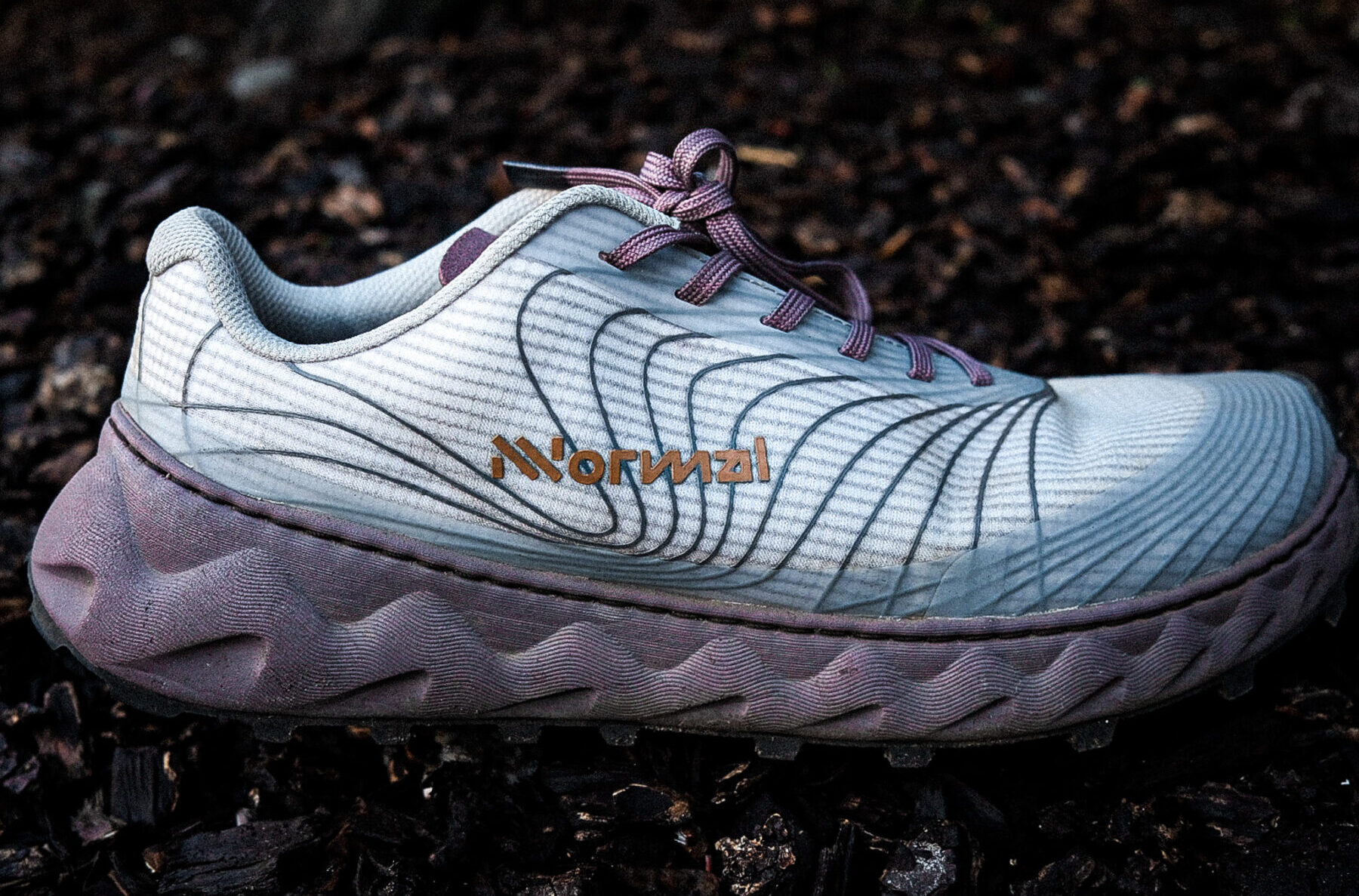
Fit & Features
During Kilian’s tenure with Salomon, he was heavily involved in developing their S/LAB collection of trail shoes. The Sense line, the brand’s signature model for race-day execution, openly drew from Kilian’s preferences as an athlete; those shoes were lightweight, minimal, had high amounts of ground feel, and a tapered, ballet-slipper-like fit. Given that Nnormal only afforded Kilian more creative control, I figured the Tomir would share a similar profile. I couldn’t have been more wrong.
Intended as a versatile option for everyday use, the Tomir forsakes absolute speed and nimbleness for comfort and accessibility. It’s much wider through the forefoot than I would have expected, allowing my toes to splay naturally during my footstrike. While a broad toe box in a lesser shoe can lead to sloppy lockdown and ankle instability, the Tomir’s asymmetrical lacing system counters slack in the forefoot / midfoot by biasing toward the shoe’s arch and medial side, which helps support pronation control. On the opposite end of the Tomir, a sizable heel counter tails off beneath a plushly padded heel collar, both of which have done quite a nice job of promoting stability and foot security thus far. The rest of the shoe’s upper is made from a starchy blend of monofilament polyester and TPE that feels soft and protective on foot.
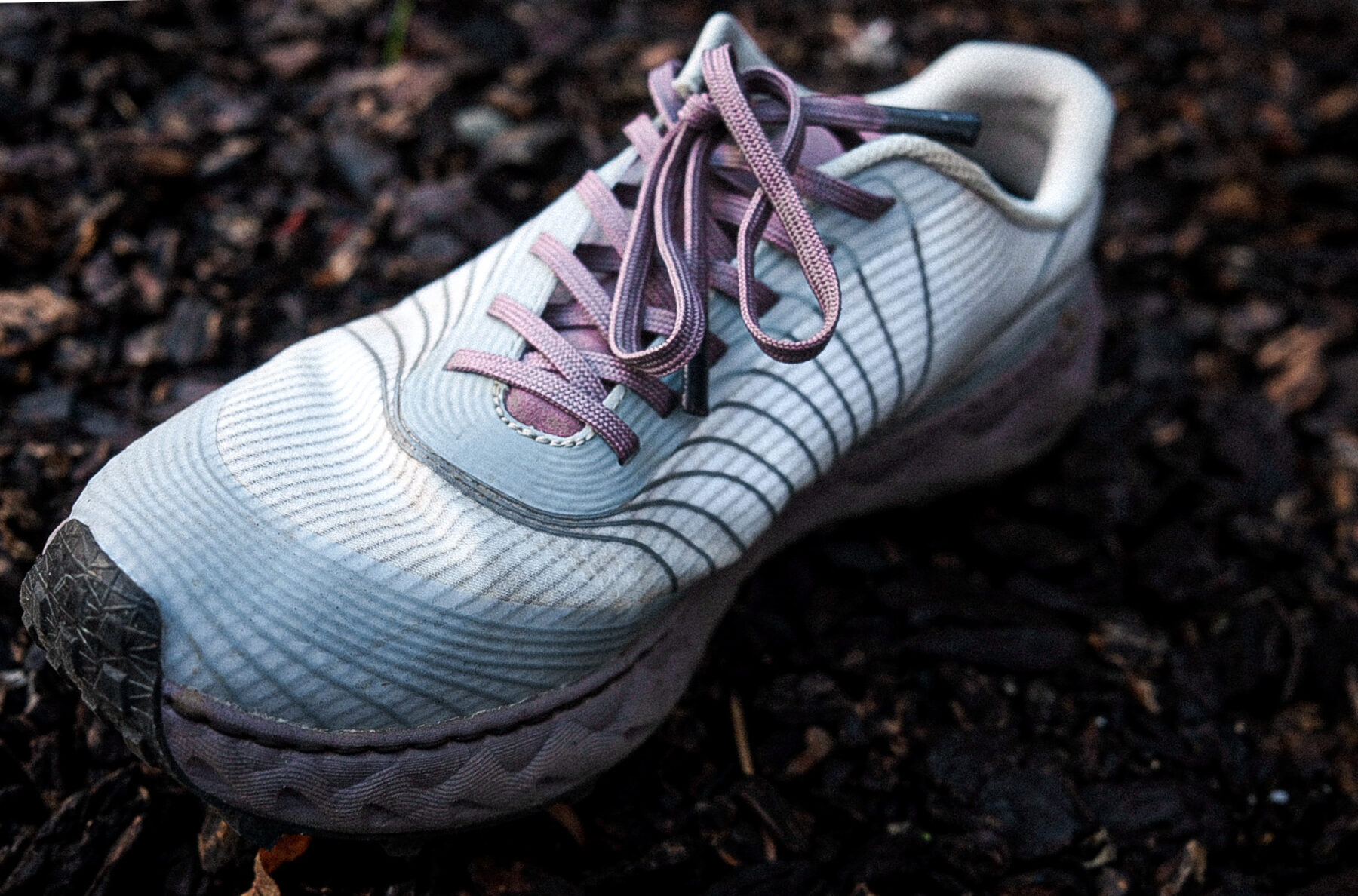
With a stack height of 31 mm / 23 mm, the Tomir peeks into the voguish “maximal” category, and I think that designation is more than earned. The shoe’s sloping mauve midsole is its defining feature, and yet while supple and inviting in appearance, Nnormal’s EVA foam isn’t as forgiving as one would think, and that’s not a pejorative. I only have about 30 miles in the shoe so far, but in that time the Tomir has remained pretty consistent in its animated energy return, unwilling to concede much in the way of softening or packing out. It manages all of this at an efficient weight, too. For reference, here’s how the Tomir’s stated weight compares to the stated weights for some other similar models. All weights are based on a US Men’s Size 9.
255 g / 9.0 oz — Saucony Endorphin Edge
260 g / 9.2 oz — Salomon Ultra Glide
260 g / 9.2 oz — Nnormal Tomir
270 g / 9.5 oz — Salomon Pulsar Trail Pro
283 g / 10.0 oz — Topo Athletic Ultraventure 2
292 g / 10.3 oz — Hoka Speedgoat 5
295 g / 10.4 oz — Hoka Mafate Speed 4
306 g / 10.8 oz — Scarpa Spin Infinity
303 g / 10.9 oz — Altra Timp 4
312 g / 11.0 oz — Brooks Caldera 6
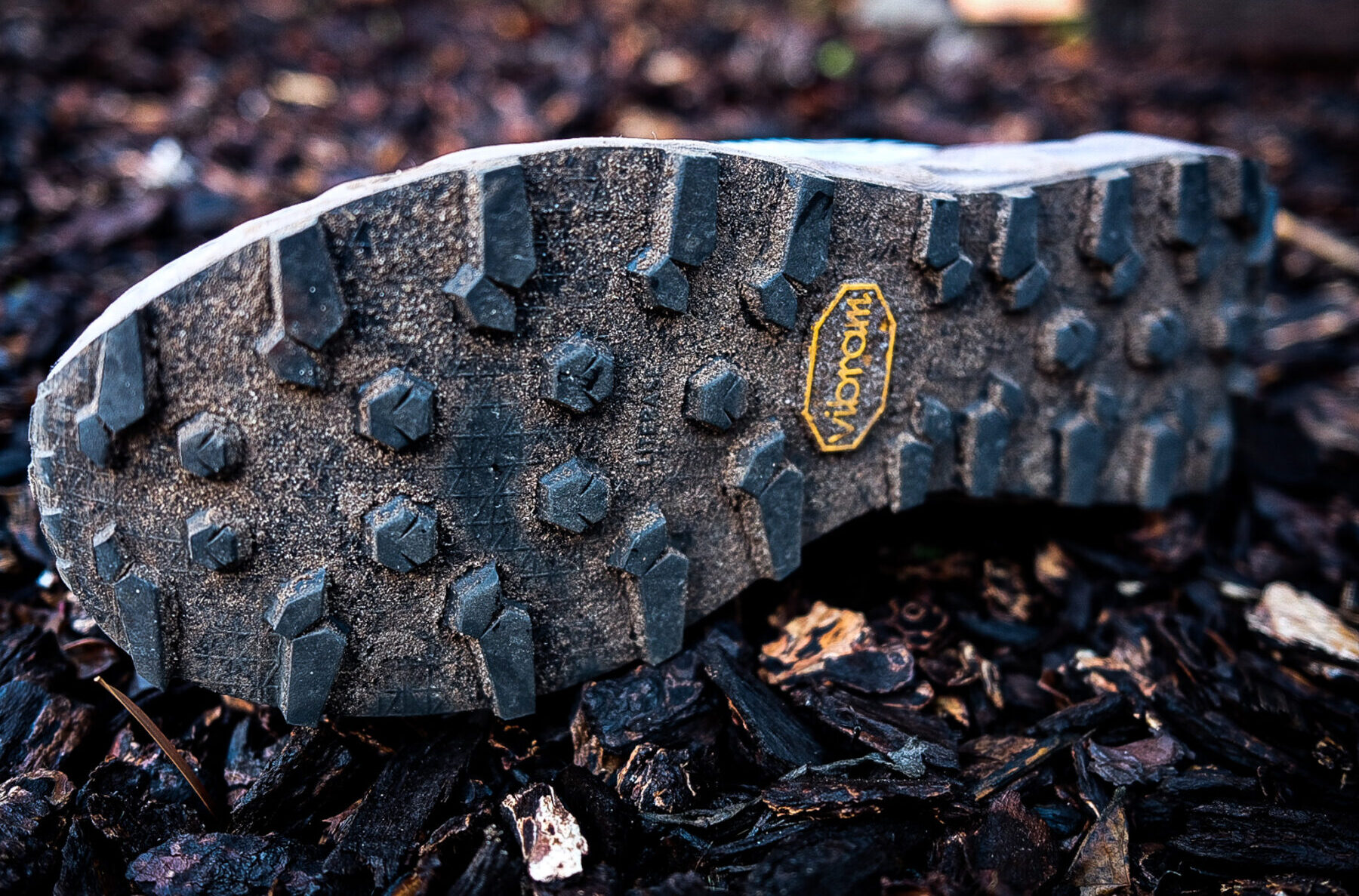
Some Questions / Things We’re Curious About
- Will Nnormal’s claims surrounding the Tomir’s durability bear out?
- Will the Tomir’s large 5 mm lugs help or hurt the shoe’s versatility?
- Given that the Tomir is billed as an “everyday” generalist, what are its exact strengths and weaknesses as it relates to use-cases?
Bottom Line (For Now)
Even though Nnormal is just a few models old, any product with Kilian Jornet’s fingerprints on it deserves to be met with high expectations. After a handful of short runs in the Tomir, the brand’s handsomely cushioned, wider-fitting, do-it-all trail trainer, it appears as if Kilian’s success has spilled over into the realm of footwear design. For a shoe that feels so well-rounded, discovering exactly where it thrives will be a focal point for our upcoming full review.
FULL REVIEW
Intro
Launched in the fall of 2022, Nnormal debuted as the long-awaited (and hotly anticipated) footwear venture from one of the leaders of trail running’s avant-garde, Kilian Jornet. After leaving his longtime sponsor in Salomon last year, an abrupt move that stirred speculation about his potential retirement from competition, Kilian announced he planned to collaborate with Spanish footwear giant, Camper, to produce a line of athletic apparel and trail running shoes. Dubbed “Nnormal,” as in, “the new normal,” the thesis of this project is part performance and part an attempt to lessen the environmental toll exacted by the footwear industry. The two principal models NNormal has released to date — their narrower-fitting racer, the Kjerag, and their maximal, wider-fitting generalist, the Tomir — marry Kilian’s personal design approach to shoes, amassed over decades of racing at the highest level, with his vocal sustainability goals.
Fit
During Kilian’s tenure with Salomon, he was heavily involved in developing their S/LAB collection of trail shoes. The Sense line, the brand’s signature model for race-day execution, openly drew from Kilian’s preferences as an athlete; those shoes were lightweight, minimal, had high amounts of ground feel, and a tapered, ballet-slipper-like fit. Given that Nnormal only afforded Kilian more creative control, I figured the Tomir would share a similar profile. I couldn’t have been more wrong.
Nnormal’s sustainability-focused mission statement also happens to be the driving force behind much of their design process. Accordingly, the Tomir is shaped with accessibility in mind; the more foot shapes and styles of fit the shoe can accommodate, the broader its application will be. And because Nnormal places some pretty audacious durability claims on all of their models, the more they sell could theoretically reduce the demand for new running shoes (and the unfriendly environmental impact tied up in their production). Environmentalism aside, these concerns make for a shoe that does a tremendous job of distributing its width judiciously in a way that keeps from ostracizing folks on either side of the wide / narrow feet spectrum.
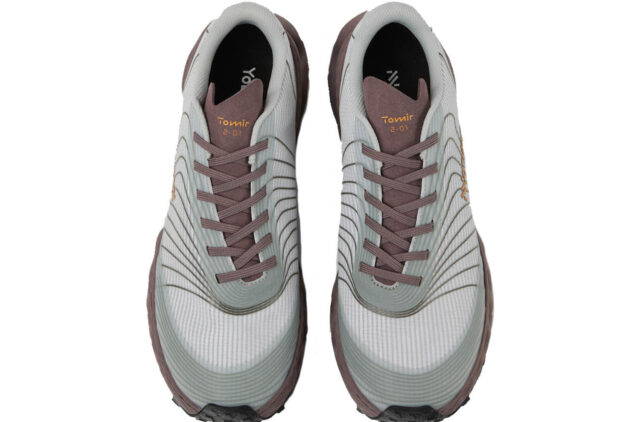
While not as rounded as a true foot-shaped toe box as seen on models from Topo Athletic and Altra, the Tomir’s forefoot still provided enough space for the toes on my relatively wide, high-volume feet to fan out naturally during my footstrike. The initial width at the front of the shoe tapered off nicely through the midfoot, toward the heel, and prevented the Tomir’s wider toe box from making the rest of the fit feel sloppy and insecure. To further shore up the shoe’s support through the arch, which I would characterize as firm but not too aggressive, Nnormal included an asymmetrical lacing system that biases medially to guide and control the foot through pronation. This transition from a lot of initial play in the forefoot to a tightened up midfoot continues its narrowing trajectory in a lightly padded, low-rising heel collar that I think some folks might find confining. In my own case, I was able to adapt to its slightly pinched design because, while narrow, the Tomir’s heel collar has a bit of flexibility to it that worked with my Achilles, and the shoe’s massive, rudder-like counter compensated for any potential instability that could arise from not having something more rigid in place.
Kilian Jornet’s reign as one of, if not the greatest, mountain runners of all time owes a lot to his genetics; he’s the proud owner of a VO2 max that’s one of the highest ever recorded, a measurable that’s often used as an indicator of performance potential in cardiovascular sports. But writing off Kilian’s success as biologically predetermined would be to dismiss just how much the guy trains (which you can read more about here). The majority of the miles he logs in a given year take place around his home in Romsdal, Norway, either on the region’s incredibly technical trails or on flat dirt paths. The contrast between surface types, as well as the immense amount of volume Kilian puts in, demands a lot from the Tomir. As an all-around trail trainer, the shoe’s fit needs to balance a level of precision for off-camber trails / scrambling with comfort for more runnable terrain, like buffed-out singletrack and bike paths. I think most folks will find that the Tomir’s “reverse taper” (i.e., the shoe noticeably narrows as you move from the toe box to the heel) effectively splits the difference between two radically different types of running by providing a comfortable amount of slack in the forefoot without sacrificing foot control and heel security. As always, the best approach is to try the Tomir on in person, if possible.
Weight
In my experience, durability claims around trail shoes are often used as a pretext for explaining a given model’s bloated weight: “Yes, this shoe is quite heavy, but that’s only because we used super durable material.” Despite relying on similar rhetoric, the Tomir stays pretty weight conscious. At 260 g / 9.2 oz for a US Men’s Size 9, it’s comparable to the Salomon Ultra Glide, a shoe we lauded for its ability to provide ample cushioning and energy return while still remaining streamlined and efficient. For more context, here’s how the Tomir’s stated weight compares to the stated weights for some other similar models. All weights are based on a US Men’s Size 9.
255 g / 9.0 oz — Saucony Endorphin Edge
260 g / 9.2 oz — Salomon Ultra Glide
260 g / 9.2 oz — Nnormal Tomir
270 g / 9.5 oz — Salomon Pulsar Trail Pro
292 g / 10.3 oz — Hoka Speedgoat 5
295 g / 10.4 oz — Hoka Mafate Speed 4
306 g / 10.8 oz — Scarpa Spin Infinity
303 g / 10.9 oz — Altra Timp 4
312 g / 11.0 oz — Brooks Caldera 6
For a non-race-specific training shoe I’d put on the fringe of the “maximal” category, the Tomir is smart about how it distributes its weight. Most of its bulk is carried in its midsole, which needs to be firm / resilient enough to support Nnormal’s longevity claims. This lends the shoe a “grounded” feel that I think helps with its stability, though likely sacrifices a bit of energy return in the process (more on that later). The price of using denser midsole foam forces the Tomir to be thrifty in other areas, specifically its outsole. To salvage a few grams, Nnormal elects to go with 30% lighter / 50% thinner Vibram Megagrip Litebase instead of standard Vibram Megagrip on the bottom of the Tomir. While I want to keep from exaggerating the impact this decision has on the shoe’s overall ride, it’s a nice gesture toward a larger weight-conscious design that has so far kept the Tomir from feeling overly clunky.
Upper
In my initial impressions of the Tomir I described the shoe’s upper as “starchy,” and after an extensive break-in period, that adjective is still pretty accurate. Nnormal uses a blend of monofilament polyester and TPE for the Tomir’s one-piece upper that feels coarse and resilient on its exterior but stays gentle on foot. Because the upper depends on just a single layer for both protection and support, it’s much more substantial than what’s seen on models that employ a bunch of welded overlays or laminates. In fact, the Tomir relies on just a single TPU overlay that extends from the shoe’s rubber toe cap to cover the front of the toe box before making its way along the shoe’s perimeter, just above where the upper is craft-stitched into the midsole. I struggled with the upper’s lack of pliability during my first 30 miles in the Tomir; it was prone to creasing at flex points near the bottom of the asymmetrical laces and failed to conform to my foot. After pushing through this initial break-in period, though, Nnormal’s monofilament polyester / TPE blend softened substantially and the shoe’s angled laces worked as advertised, reducing pressure points and cleaning up any slack I might have felt in the forefoot.
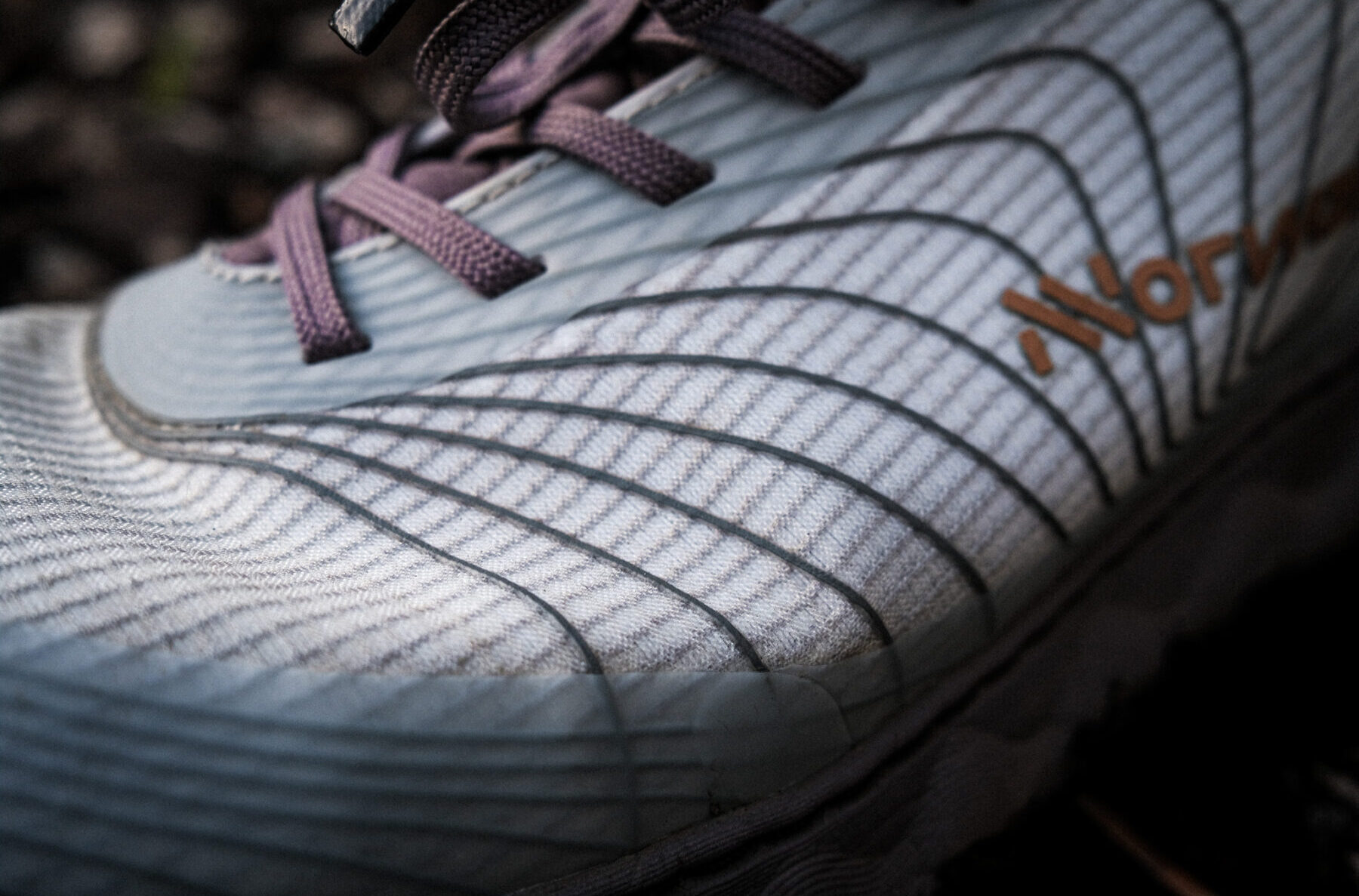
Midsole
Sticking with the theme of “what you see is what you get,” the Tomir’s midsole forgoes the contrivances of most modern shoes. We don’t get any dual-density combinations of foam, nor do we see performance plates, radical rocker geometry, etc. Instead, Nnormal uses a hearty helping of their own proprietary EVA foam to structure a midsole with 31 mm of stack height and a moderate 8 mm of heel-to-toe drop. Compared to the buoyant EVA foam Hoka enjoys using in models like the Speedgoat 5, Nnormal’s EVA has a much higher density and feels quite a bit harder. These traits play out in a number of ways: (1) the Tomir’s midsole doesn’t feel as cushioned as its size might suggest; (2) it takes longer to break in but likely holds onto its energy return for longer than average; (3) it’s likely more stable than softer midsole compounds; and (4), it’s by far the heaviest part of the shoe. Taken together, these characteristics make for a ride that’s far from plush, is subtle in its rebound (even on firm surfaces), and, above all else, is consistent.
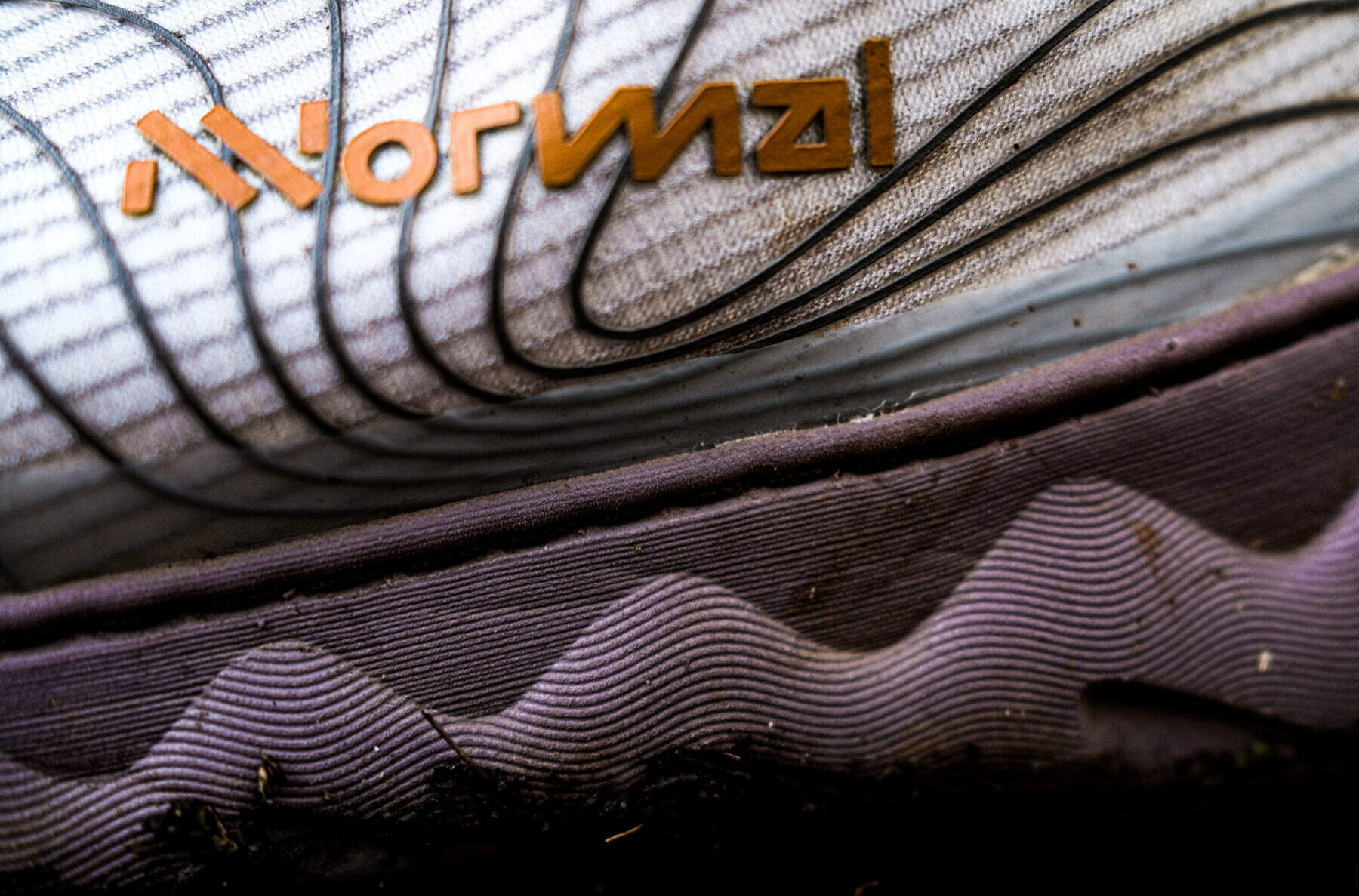
I think the Tomir’s midsole addresses the breadth of its intended uses (i.e., cruising groomed footpaths to navigating off-trail alpine environments). 31 mm of stack is there to dampen impact forces over longer runs as well as protect the feet from sharp debris, but the EVA Nnormal uses is still firm enough to perform well in scrambling scenarios, where having more of a rigid lever underfoot can be helpful. The shoe’s ability to transition between environments without skipping a beat impressed me the most, a versatility I largely ascribe to its midsole.
In summation, the compromises Nnormal makes for the sake of durability and versatility are felt the most in the Tomir’s midsole; whether or not you can get on board with these decisions is up to you. While far from the most comfortable / plush shoe I’ve tested, the way my foot gets along with the Tomir and all of the early signs indicating how gracefully it will age is enough for me to buy in long-term. If that stance changes over the next couple hundred miles, I’ll make sure to update this review accordingly.
Outsole
From the limited number of folks I’ve talked to who have spent a good amount of time in the Tomir, I’ve gotten the sense that the most contentious part of the shoe is its Vibram Megagrip Litebase outsole. Reviews have been split; many applaud Nnormal for using a premium-grade rubber compound on an otherwise pretty utilitarian shoe, while others question to what degree it helps or hinders the Tomir’s role as an option for everyday use. After testing, my feelings are similarly mixed.
I generally give the green light to footwear designers anytime they wish to work with Vibram (especially the excellent Megagrip compound), and its use in the Tomir is more than warranted from both a durability and performance standpoint. The Litebase construction helps keep weight down, and the toothy 5 mm lugs that run from heel to toe provide excellent purchase on both soft and hard surfaces. Cleat-like, the Tomir’s outsole kept my feet from slipping on greasy trails in the wake of a winter storm that recently moved through the Bay Area and maintained traction well on oil-slick cement after heavy rain.
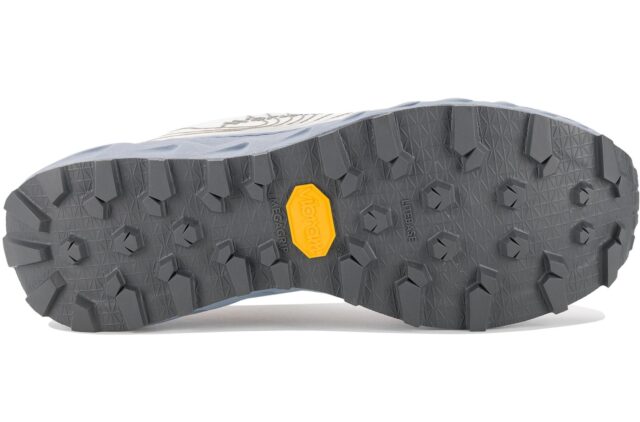
On Trail
One of my main intentions I put forward before testing the Tomir was to judge the shoe based on how closely it lived up to Nnormal’s own expectations for it, namely its ability to carry the workload of several different models within a shoe quiver (or replace them altogether). This minimalist concept (i.e., buying fewer things is better for the environment because it creates less waste) is Nnormal’s overarching thesis, after all, so it felt like a fair assessment of the Tomir. In practice, this meant that I’d exclusively run in the Tomir during my testing period while at the same time trying not to deviate from what I’d consider to be my base volume of training.
On any given week, this generally consisted of two short shakeouts on urban trails in Golden Gate Park; an 8-12 mile workout on pretty tame fire roads in the Marin Headlands; a mellow Mt. Tam summit on a mix of road and techy-ish trail with a scrambling move thrown in for good measure; and a couple of medium to long-distance runs between 12 to 20 miles on the weekends that could include an encompassing range of surface types. All told, I (so far) subjected the Tomir to three straight weeks of this type of abuse, and after returning to my usual rotation of 3 to 4 trail shoes, have walked away pretty impressed with what Nnormal has turned out so early in their tenure.
Once given an extended break-in period to help dampen the rigidity of the midsole and temper the upper material, the Tomir conformed to my foot in a way that felt gently supportive but never claustrophobic. I could sense the guidance provided by the shoe’s asymmetrical lacing system and tapered midfoot only when I actively thought about it, like a type of soothing white noise. The interplay between the Tomir’s structured heel and heel counter on one end, and the accommodating toe box on the other, lent the shoe a nice equilibrium when climbing at a slow trot and descending at high speed. On flatter stuff, the density of the midsole sprang into action and provided a noticeable amount of energy return that didn’t seem to fluctuate much as the Tomir began to rack up miles.
I think the highest compliment I can pay the Tomir is to call it, well, somewhat vanilla. I use that term not as a pejorative, but instead offer it as a commentary on the shoe’s ability to make most of my runs feel like they’ve been blended together. Nnormal has done such a good job of balancing the Tomir in a way that prepares it to handle any number of surfaces, speeds, and distances that it can be hard to identify exactly where it thrives, which I guess is kind of the point? Given the option, I’d want something faster for workouts, like the Salomon Pulsar, and likely a model with a bit softer of a midsole for my longer efforts, like the Altra Olympus. But, limited to a single pair of shoes, whether because of environmental reasons or not, the Tomir would certainly be at the top of my list.
Durability
Next to versatility, durability seems to be the Tomir’s chief selling point so far; without it, Nnormal’s entire mission to help reduce the wasteful byproducts endemic to the footwear industry falls apart. I’ve already highlighted a few areas on the Tomir that serve this purpose — including the decision to sew the shoe’s upper directly to its midsole, the noticeably firm EVA foam Nnormal uses in that same midsole, and the overall thickness of the Tomir’s monofilament polyester / TPE blend upper — and after a consolidated 180 miles in the shoe so far, the Tomir is still in near-immaculate shape. Aside from the inevitable wearing down of the outsole, which, given the quality of Vibram rubber and the Tomir’s lug length, likely won’t be steep, my only real concern about the Tomir’s long-term future has to do with its tongue and heel collar construction. Both seem flabby compared to the rest of the shoe’s build quality and are routinely under stress. How they age as I continue to run in the Tomir is something I’ll be paying close attention to. As always, if anything changes down the line I’ll be back with updates.
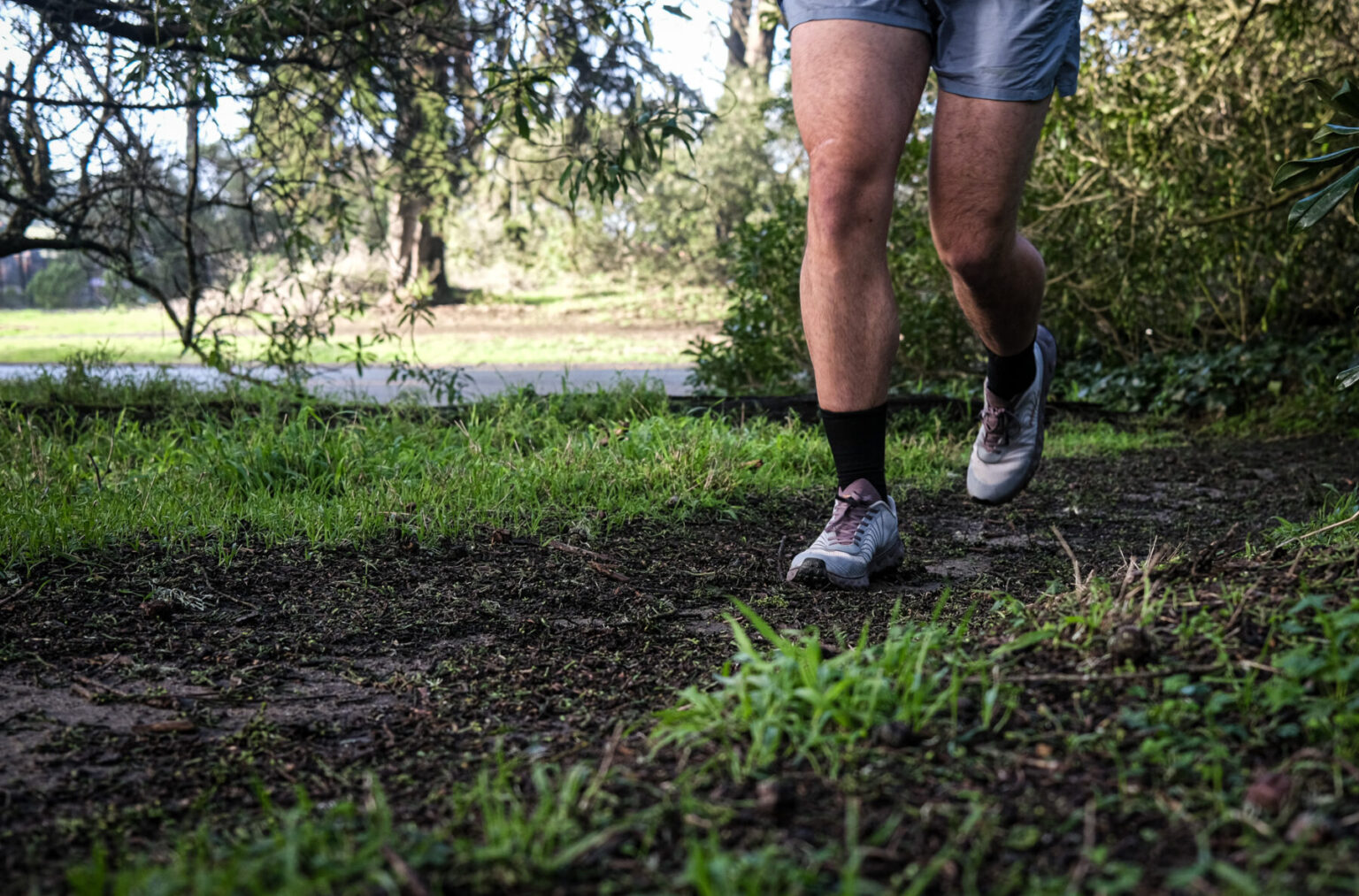
Who’s It For?
Let’s be honest, most folks running high mileage probably won’t trim their trail shoe rotation in favor of the Tomir. While the shoe is plenty capable of taking on the role of an “every-down-back” (i.e., a “do-it-all” option, for those less familiar with niche American-football-speak), it can feel limiting at times if you’re used to using specific shoes for workouts, long runs, races, etc. No, the Tomir is a trail “generalist” to its core, but it’s one of the best examples that I’ve tested, and I think should be used accordingly. Runners of nearly all types should be able to approach this shoe with confidence, knowing that they’re getting a model that is conscious of its weight, designed to fit a ton of different foot shapes, feels at home at both sub-ultra and ultra-distances (~50 miles and below, I’d reckon), and should last quite some time. Moving forward, I plan to take the Tomir with me when traveling as well as keep it in my rotation as a default option for when I hit the trails without a plan.
Bottom Line
Even though Nnormal is just a few models old, any product with Kilian Jornet’s fingerprints on it deserves to be met with high expectations, and the Tomir, the brand’s debut do-it-all-trainer, is a healthy rejoinder to those demands. The premise behind the Tomir is both ambitious and moral: to perform the role of several shoes so we consume (ergo, waste) less, and performance-wise, it’s certainly capable of doing just that. Nnormal has done an excellent job of introducing elements into the Tomir that address most foot shapes, styles of running, and surface types; whether or not trail runners will jump at the chance to ditch their quiver in favor of a shoe that is capable on most everything but excels at nothing remains a question.

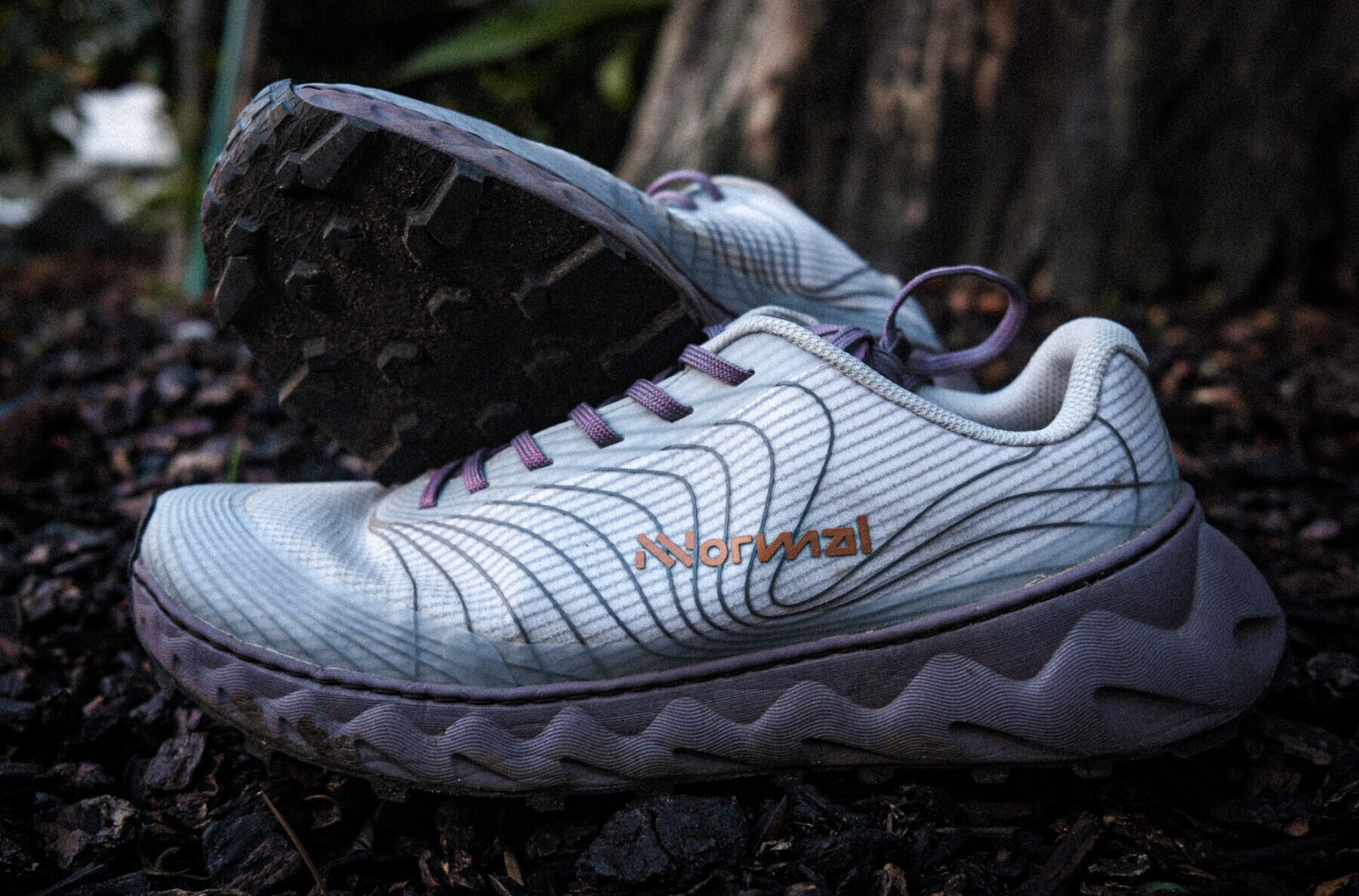

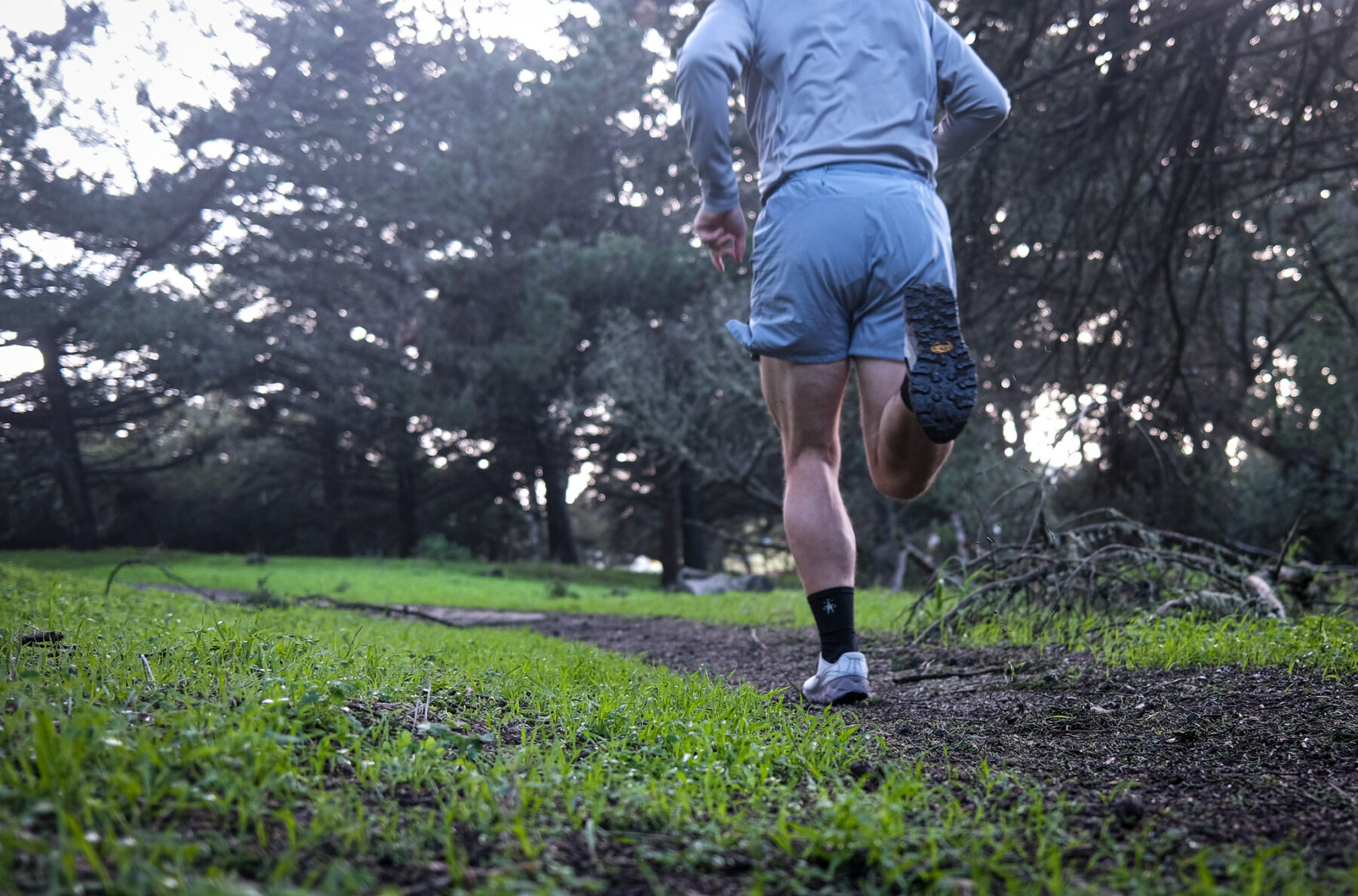
Would love to see how this compares to Naked T/r Trail Racing Shoe
Something like that is already in the works!
stiff sole stiff upper, even after 100kmin wet muddy and dry. Stable, wide platform, very good grip. Not very comfortable generally.
8mm drop is a lot.
I do like the shoe, but in my experience, the grip is lacking in rocky terrain. The limited number of tall lugs really lowers the sticky rubbers’ surface area and is a puzzling design choice.
Curious if this (or the Kjerag, or neither) would be appropriate for ultras on primarily dirt, gravel, and non-technical terrain.
Hey Kiel,
Thanks for your question. I think you can make the argument that both the Tomir and the Kjerag are appropriate for the type of ultras you describe. Deciding between the two largely comes down to your own preferences when it comes to fit, weight, level of cushioning, etc. I suspect most folks will do better in the Tomir for distances over 50k; its higher stack height and roomier toe box likely make it a more comfortable option than the slimmer, less forgiving Kjerag, especially as the miles / kms start to add up.
I hope that’s helpful!
Matt
I got the Tomir. I thought its design (ie., color, overall looks, sole) was terrific. Unfortunately, the asymmetrical lacing system overlaid a bone on my instep, which made it very uncomfortable. I believe a traditional lacing set-up would have made the shoe ideal for me. I’m sure that it works for others but not for me. Perhaps the Kjerag, with its traditional lacing would be a better fit for me? I wish there USA-based stores in the NYC vicinity where I could try on and avoid the international return.
Hi Matt – Great review (on the Kjerag too). I’m really interested in Picking up the Tomir or Kjerag. I’m currently running in Saucony’s Xodus Ultra (which I love) for all my long runs 20 or 30km+. Have you run in this shoe and if so wondered how it compares to the Tomir & Kjerag.
I find that using Japanese measurement (centimeters) is a more accurate indicator for sizing. Can you tell me what is the Japanese equivalent for US 9 & US 9.5 for men … ? (or what the equivalent was for the tested shoes?)
Hello there,
I’m looking for a pair of boots suitable for hiking at high altitudes and low temperatures, conditions may include some snow and rain. I don’t want to get heavy technical footwear, and these seem to be light and durable. Would you recommend these boots for that matter?